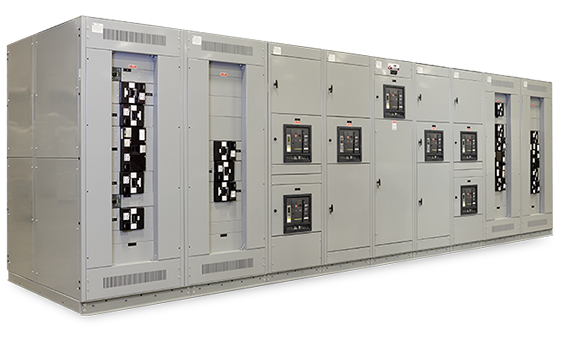
Installation Testing
When installing a switchboard, a dielectric test should be made to determine the adequacy of insulation. Devices used, as part of switchboard assemblies shall be capable of meeting the following tests:
- Alternating current test voltage shall have a crest value equal to 1.41 times the values specified. A sine wave shape is recommended. The frequency shall not be less than the rated frequency of the apparatus tested. The test voltage shall be applied for one minute.
- Direct current test voltage, if used in lieu of alternating current test voltage, shall be 1.41 times the specified alternating current voltage.
* Equipment rated 60 volts and below. That part of assembled equipment rated 60 volts or less shall withstand an alternating current voltage test of 500 volts.
* Equipment rated 31 to 600 volts.
Alternating current assembled equipment and alternating current circuits of equipment of higher rated voltage rated 61 to 600 volts shall withstand an alternating current voltage test of 1000 volts plus twice rated voltage, with a minimum of 1500 volts.
When assembled in field and connected, test voltages should be 75% of factory test value. The equipment should be checked to be certain no tools or any other equipment have been left in the switchboard.
When connections are to be made to or from an Electric Utility, public or privately owned, consult their representatives very early in the construction period, as many of them have very strict requirements which must be met before service connections will be made.
Frequency of Inspection & Testing
It is generally good practice to inspect equipment three to six months after it is first put in service and then inspect and maintain it every one to three years depending on its service and operating conditions. This suggested schedule is only a guide. Conditions that can make more frequent maintenance necessary are:
- High humidity and ambient temperatures
- Corrosive atmosphere
- Excessive dirt and dus
- High repetitive duty
- Frequent interruption of faults
- Older equipment History on preceding inspections.
To Learn More
Click on the button below to get our free Switchboard Installation and Maintenance Manual.




